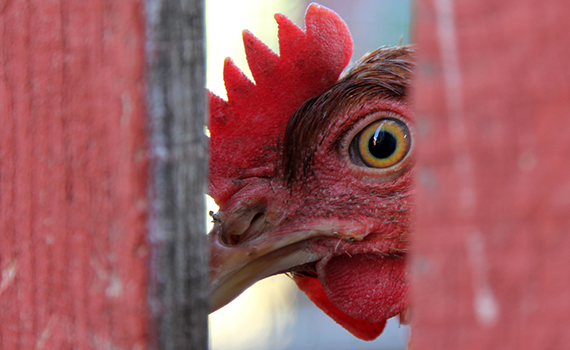Inexperience leads to disaster in small specialty poultry flock

Disease and high mortality in a small Midwestern poultry operation of the US demonstrate the consequences of inexperience coupled with the treatment restraints of organic farming, Patricia Wakenell, DVM, PhD, Purdue University, reported at the 2016 Western Poultry Disease Conference.[1]
In her presentation, “Disaster Flocks: When good intentions go bad,” Wakenell reported on a 5,000-bird flock with mortality that at one point reached 50% to 60%. No treatment had been initiated because the farm was organic.
Contacted for help, the university’s Poultry Diagnostic Service found unvaccinated birds. Only a half-wall separated broilers from layers. Although broilers were separated into pens by age, they could jump from one pen to another. Litter was never changed and some had been present for at least 6 months. New hatchlings were in a pen previously occupied by turkeys. Ventilation was adequate, but heat for young broilers was not, Wakenell said.
There were numerous dead broilers and those that were sick had snicking, lameness, diarrhea, stunting, pendulous crops, ataxia, depression and feather loss. Diagnostics revealed reovirus tenosynovitis, infectious bursal disease, infectious bronchitis, Marek’s disease and salmonellosis. The owner refused to depopulate but cleaned out litter from vacated pens and sourced birds vaccinated against Marek’s disease. A second submission for diagnosis, however, turned up aspergillosis, she said.
About 1 month after the university’s initial visit, mortality was occurring in layers. Infectious laryngotracheitis and mycoplasma were diagnosed. The owner resisted total depopulation of the layer flock but depopulated birds on one side of the building.
There has been some improvement, with broiler mortality approaching 40%. However, “the resistance to depopulation, cleaning, disinfection and single-age broiler restocking has made it difficult to find ways to improve the health of the birds,” Wakenell said.
“Small specialty poultry flocks are exploding in popularity, driven by public desire to have local fresh eggs and meat. Unfortunately, many of the farmers are new to poultry farming and do not have training in the basics of biosecurity and disease containment. In addition, public demands for organic products limit the types of intervention that can be used when disease issues do occur on the farms,” she said.
[1] Wakenell P, et al. Diaster Flocks: When good intentions go bad. Proceedings of the 65th Western Poultry Disease Conference, 2016, Vancouver, BC, Canada.
Posted on February 3, 2017
 We’re glad you’re enjoying
We’re glad you’re enjoying






